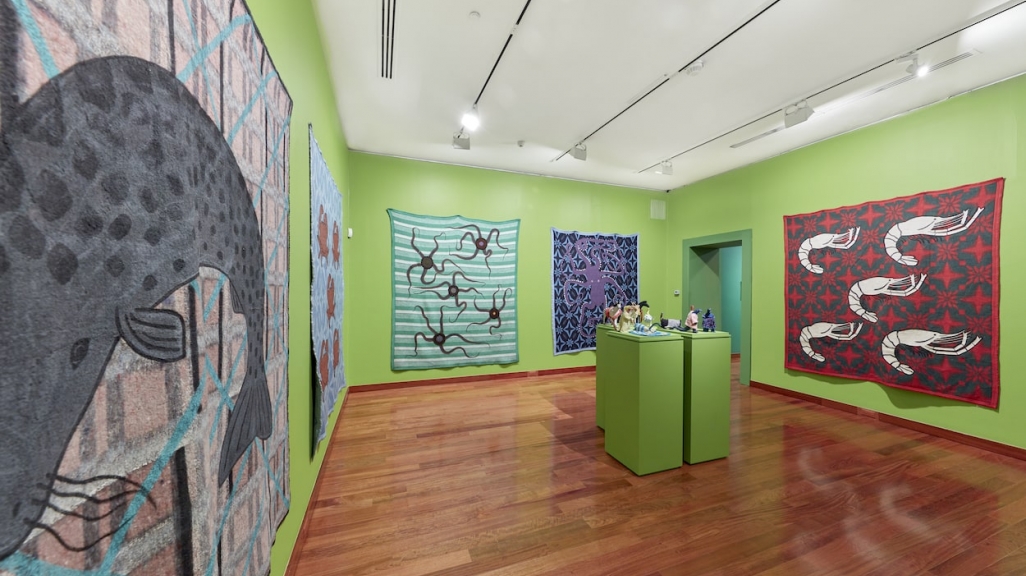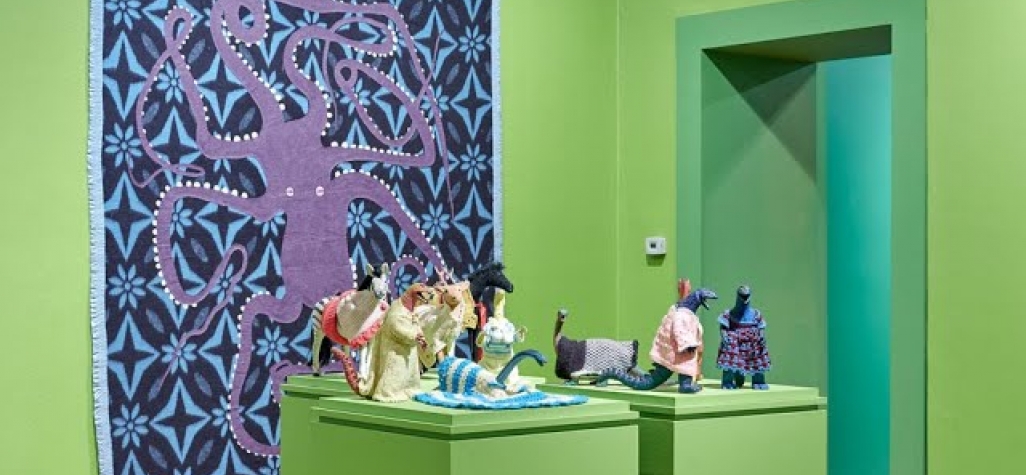Feliciano Centurión: Abrigo
On view:
through
Feliciano Centurión: Abrigo
Americas Society is pleased to invite you to the first solo exhibition of Paraguayan artist Feliciano Centurión in the United States, curated by Gabriel Pérez-Barreiro. Centurión created textile works engaging with folk art and queer aesthetics in 1990s South America. Through the embroidery and painting of vernacular objects such as blankets and aprons, Centurión rendered poetic readings of his youth in the tropics, his love experiences in the metropolis, and his spiritual reflections before his untimely death due to AIDS-related illness.
Make a booking to visit the gallery with our new safety guidelines.
Take a look at individual artworks in the installation:
Feliciano Centurión's art was documented "through declarations of affection, love, and hope," writes Terremoto Magazine about Abrigo.
"Centurión’s work resonates deeply, proffering both courageous perspective and tender wisdom," writes Susan Breyer about Americas Society Visual Arts' exhibition Abrigo.
"El modo de activismo y resistencia de Centurión fue íntimo y afectivo, centrado en el amor...el refugio –o abrigo— que el arte puede brindar en medio de un mundo hostil," escribe Artishock sobre Feliciano Centurión: Abrigo.
"This is a humbling reminder of what shelter means at this moment—and an encouragement to make art from whatever materials are on hand," writes Martha Schwendener about Feliciano Centurión: Abrigo in The New York Times.
"El múltiple sentido de la palabra que da nombre a esta muestra amplifica su mensaje, que está hoy más vigente que nunca", escribe March Mazzei en Clarín sobre la exposición Abrigo de Americas Society.
La Nación de Paraguay escribe que Feliciano Centurión: Abrigo es una "importante exposición".
The presentation of Feliciano Centurión: Abrigo is made possible by the generous support of waldengallery, Galeria Millan, and Cecilia Brunson Projects. The exhibition is supported, in part, by public funds from the New York City Department of Cultural Affairs in partnership with the City Council. Additional support is provided by Sharon Schultz.
Americas Society acknowledges the generous support from the Arts of the Americas Circle members: Estrellita B. Brodsky; Virginia Cowles Schroth; Diana Fane; Galeria Almeida e Dale; Isabella Hutchinson; Carolina Jannicelli; Luis Oganes; Vivian Pfeiffer and Jeanette van Campenhout, Phillips; Gabriela Pérez Rocchietti; Erica Roberts; Sharon Schultz; Diana López and Herman Sifontes; and Edward J. Sullivan.























